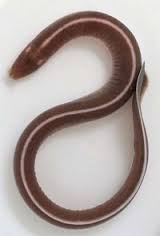研究重點
My research field is Evolutionary Developmental (EvoDevo) Biology. I seek to understand how highly sophisticated morphology and its developmental mechanisms have evolved and diverged from the common ancestor of the vertebrates. For this purpose, various evolutionary important organisms (from fish to amphibian species) are used for anatomical, histological, developmental, and molecular investigations in my lab. Current specific topics are as follows:
(1) Hagfish EvoDevo Biology

Hagfish has been recognized as one of the most important animal for the understanding of the common ancestral features of vertebrates because of its apparently primitive morphology and phylogenetic position (Fig. 1). However, due to the difficulty of the obtaining the embryos, there has not been progress in the developmental biology of the animal for a century. To provide further progress, we started Hagfish EvoDevo Project in Japan (RIKEN CDB) since 2005, and we succeeded in developing the experimental systems for obtaining hagfish embryos under the artificial condition (Fig.2) and analysis of the gene expression patterns in 2007. By applying these experimental systems, we investigated neural crest cell which is one of the embryonic synapomorphy of the vertebrates. This investigation showed that the hagfish also has de-epithelialized neural crest cells as known in the jawed vertebrates (Fig. 3), indicating that the origin of the neural crest cells could date back to 500 million years ago. We are now studying on the origin of the vertebral elements, and some other morphological features which are known as important vertebrate characteristics. We are certain that our hagfish EvoDevo project will provide further understanding of the common ancestral state of the vertebrates.
(2) Evolution of the Axial Musculoskeletal Systems
The highly organized axial musculoskeletal systems are known to be one of the representative features in vertebrates and have been intrigued by a few researchers in the field of developmental biology. In fact, the developmental process of the axial musculoskeletal systems have been studied by applying molecular techniques to the model organisms, including zebrafish, frog, chick, and mouse, and these studies revealed that most of axial muscle and skeletal tissues are developmentally derived from the derivatives of embryonic somite. However, our knowledge is still insufficient to depict how the developmental mechanisms of the axial musculoskeletal systems, which have provided adaptive shapes and functions for various environments, have evolved. To tackle this, I am now developing embryological and molecular experimental systems for detailed observations of connectivity among cartilages, bones, tendons, muscles, and nerves in various non-model vertebrates, including hagfishes, lampreys, sharks, polypterus, gar, teleost fishes, lungfish, and axolotl. I expect that these non-model organisms will provide further insight into the developmental mechanisms at the common ancestors between sarcopterygian / actinopterygian, Chondrichthyes / Osteichthyes, and gnathostomes / cyclostomes, allowing us to draw the detailed evolutionary process of axial musculoskeletal systems.





